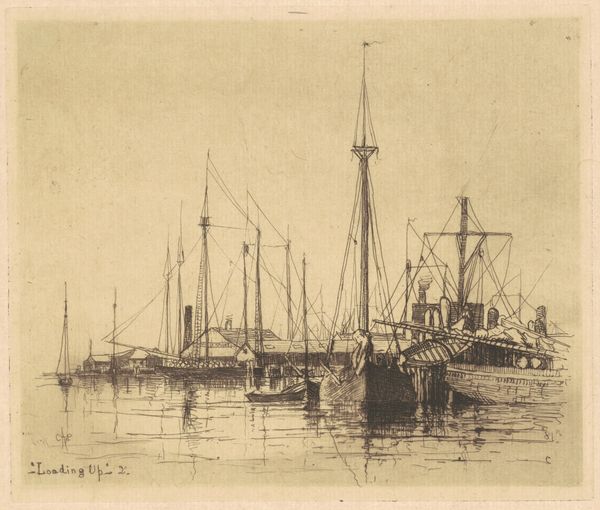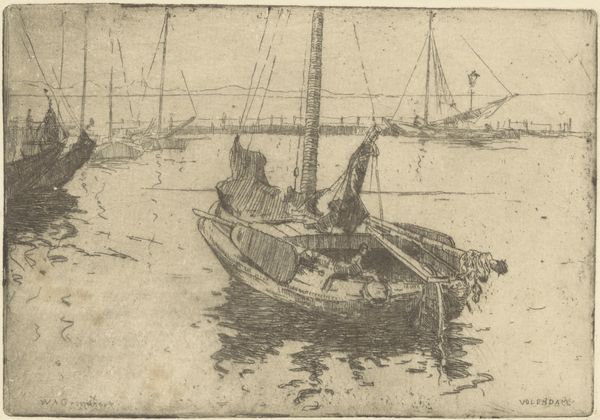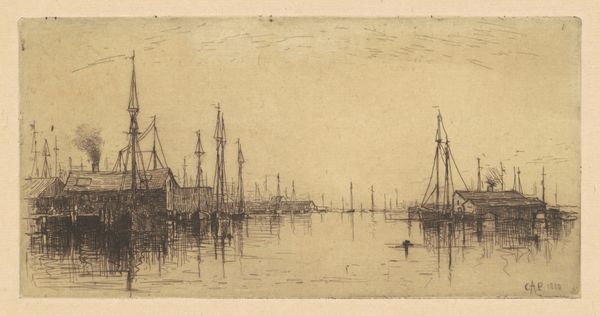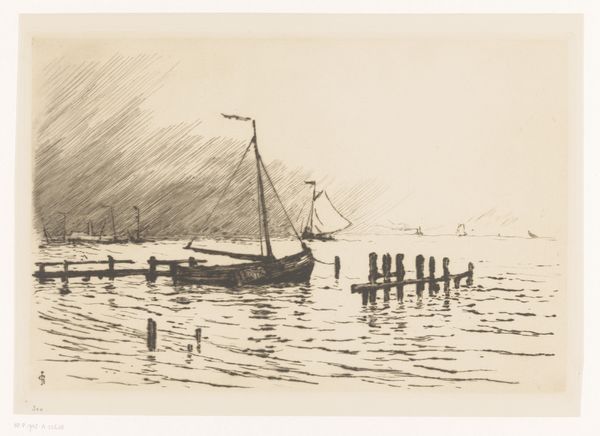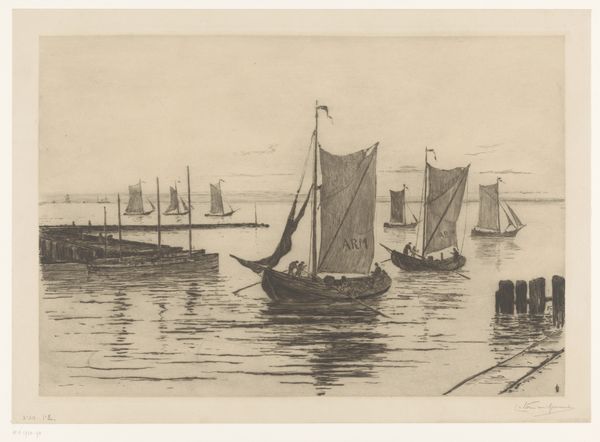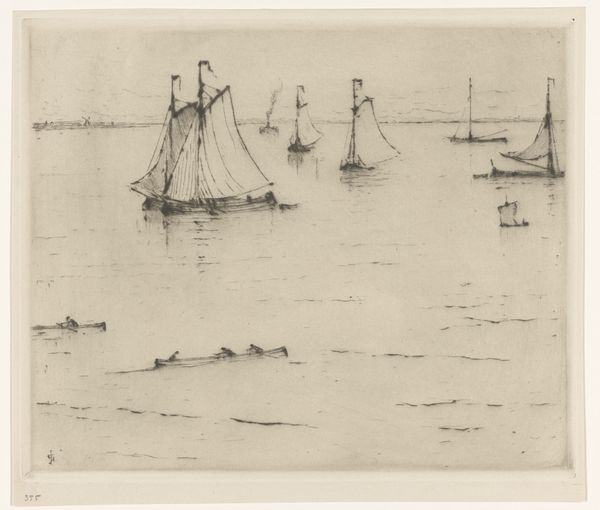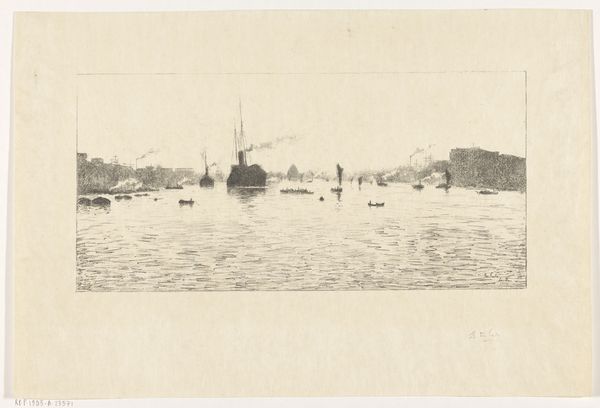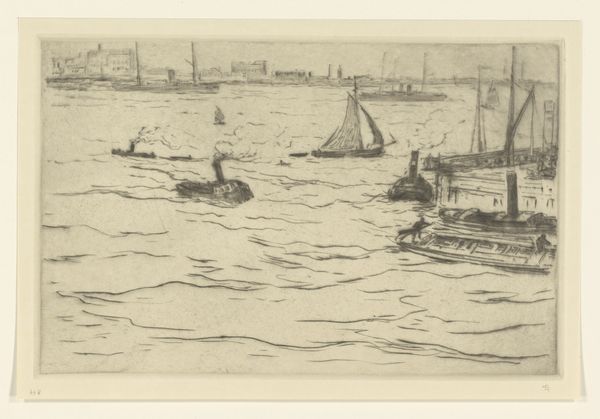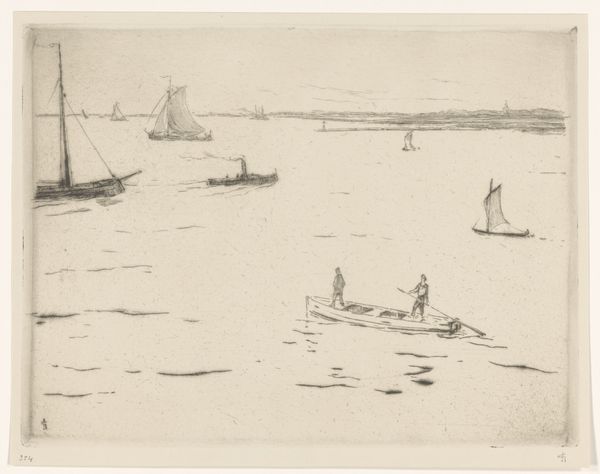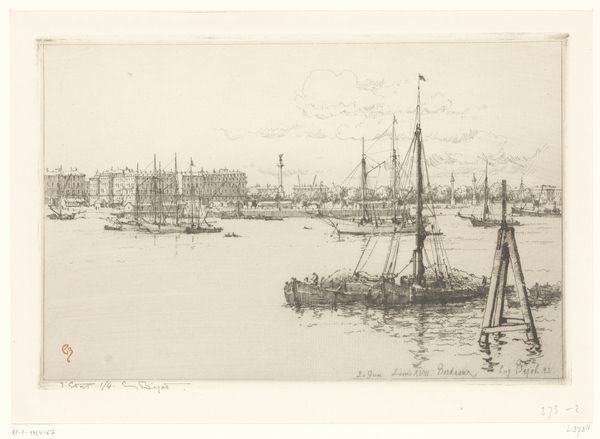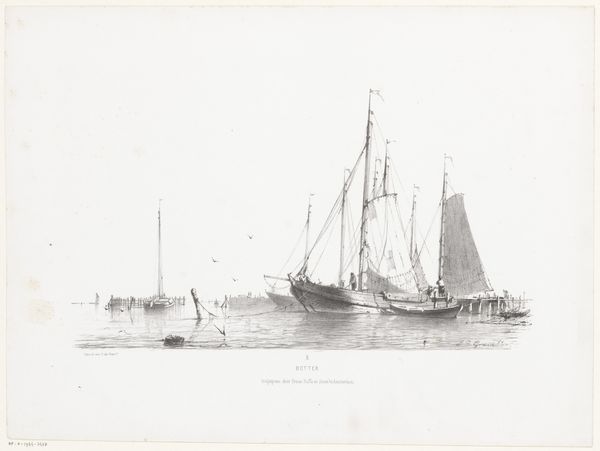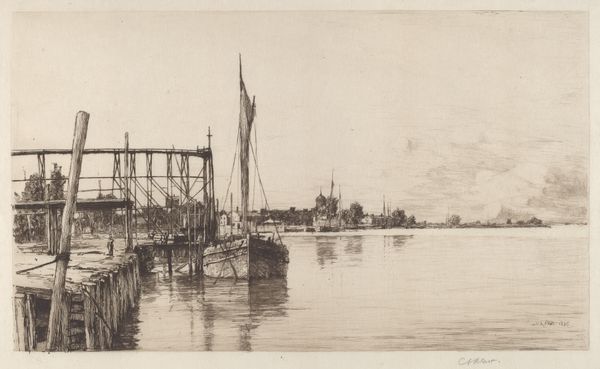
print, etching
# print
#
etching
#
landscape
#
cityscape
#
realism
Dimensions: image (irregular): 19.69 × 29.21 cm (7 3/4 × 11 1/2 in.) sheet: 30.16 × 37.78 cm (11 7/8 × 14 7/8 in.)
Copyright: National Gallery of Art: CC0 1.0
Charles A. Platt made this etching of the Brooklyn Bridge with ink on paper. Platt employs a printmaking process deeply connected to labor. Etching involves using acid to cut into a metal plate, which is then inked and pressed onto paper to create an image. The fineness of the lines and the subtle gradations of tone suggest a meticulous and time-intensive process. The image captures the iconic Brooklyn Bridge amidst the industrial activity of the waterfront. In the late 19th century, the bridge symbolized modernity and progress. Yet, Platt's etching also hints at the vast amount of work involved in constructing such a landmark. The print implies the labor required to build both the bridge and the ships, which are the bedrock of global capitalism. Looking at the texture of the etching lines, we can appreciate the artist's skill and the many hours of labor required. It's a reminder that art, like any form of making, is deeply intertwined with social issues of labor, politics, and consumption. Ultimately, this etching helps us recognize the value and skill of making and its connection to broader cultural stories.
Comments
No comments
Be the first to comment and join the conversation on the ultimate creative platform.
